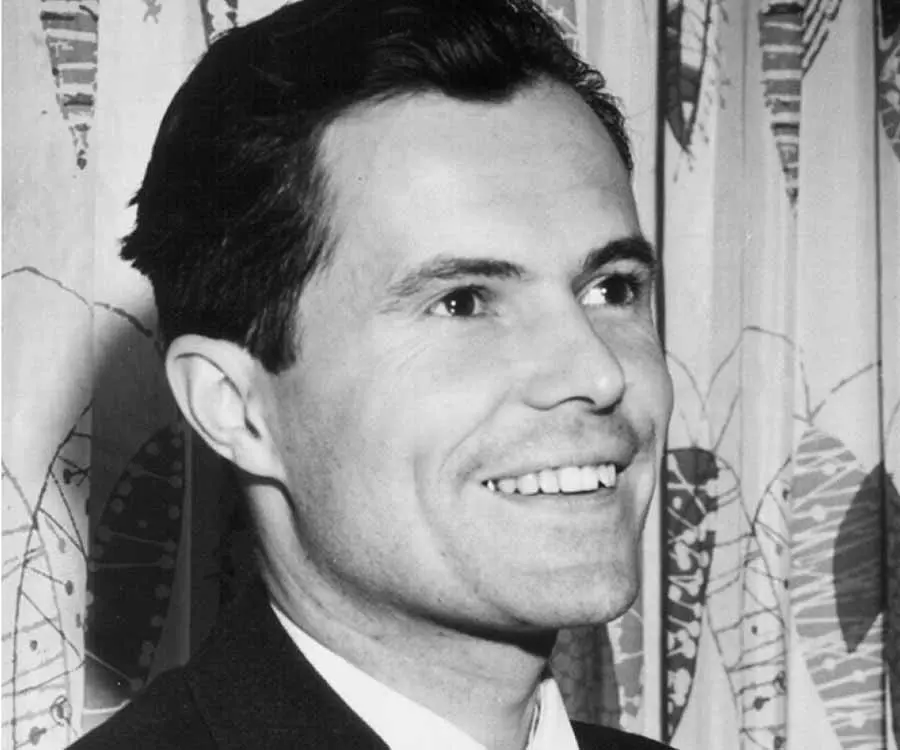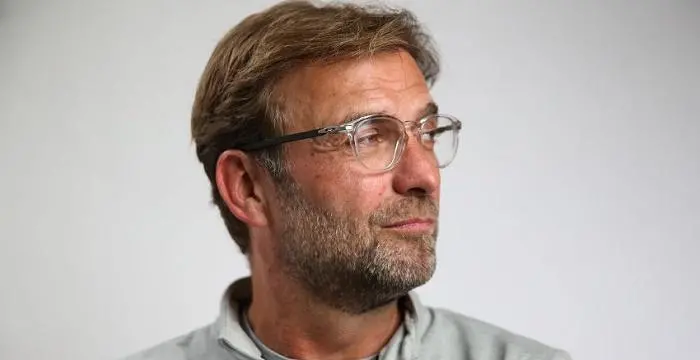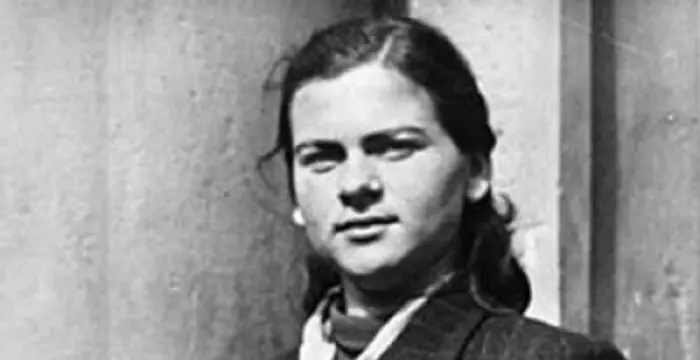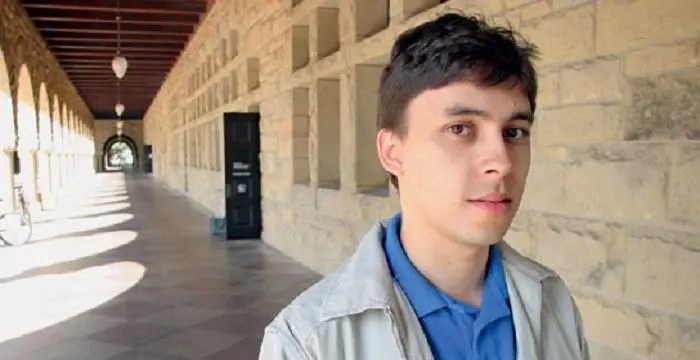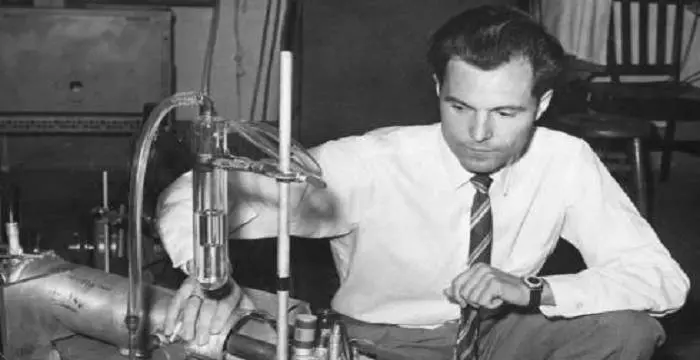
Rudolf Mössbauer - Scientists, Birthday and Childhood
Rudolf Mössbauer's Personal Details
Rudolf Mossbauer was a German physicist who discovered the Mossbauer Effect
| Information | Detail |
|---|---|
| Birthday | January 31, 1929 |
| Died on | September 14, 2011 |
| Nationality | German |
| Famous | Scientists, Physicists |
| Spouses | Christel Braun, to Elisabeth Pritz |
| Known as | Rudolf Ludwig Mössbauer |
| Childrens | Peter, Regine, Suzi |
| Birth Place | Munich, Weimar Republic |
| Gender | Male |
| Father | Ludwig Mossbauer |
| Mother | Ernest Mossbauer |
| Sun Sign | Aquarius |
| Born in | Munich, Weimar Republic |
| Famous as | Physicist |
| Died at Age | 82 |
// Famous Scientists
Juliane Koepcke
Juliane Koepcke is a German-Peruvian biologist, who was the lone survivor among the 92 passengers and crew of the ill-fated LANSA Flight 508 that crashed in the Peruvian rainforest on 24 December 1971. Know more about her life in this biography.
Henry Cavendish
Henry Cavendish was a theoretical chemist and physicist, renowned for discovery of hydrogen and calculation of the mass of earth. To know more about his childhood, profile, timeline and career read on
Konstantin Tsiolkovsky
Konstantin Tsiolkovsky was a Russian rocket scientist and a pioneer of astronautics. This biography provides detailed information about his childhood, family, personal life, career, achievements, etc.
Rudolf Mössbauer's photo
Who is Rudolf Mössbauer?
Rudolf Mossbauer was a German physicist who discovered the Mossbauer Effect for which he was honoured with a Nobel Prize in 1961. He was the first to provide an experimental proof of recoilless nuclear resonance absorption, the emission without recoil of gamma rays by radioactive nuclei of crystalline solids, and the way these emitted rays are subsequently absorbed by other nuclei. The discovery, which was later termed Mossbauer Effect, was extremely crucial in the field of physics as it was used to verify Albert Einstein’s general theory of relativity and helped in measuring magnetic fields of atomic nuclei. It also formed the basis of Mossbauer Spectroscopy which has been widely used in biological sciences, nuclear physics, inorganic and structural chemistry, solid state studies, and several other related fields. Mossbauer’s discovery assisted in the study of energy levels in atomic nuclei and how they were affected by their surroundings and various phenomena. However, Mossbauer did not restrain his investigation and study to recoilless nuclear resonance fluorescence only. Towards the end of his career, he studied electroweak theory, neutrinos, neutrons, and the conversion of hydrogen into helium as well.
// Famous Physicists
Henry Cavendish
Henry Cavendish was a theoretical chemist and physicist, renowned for discovery of hydrogen and calculation of the mass of earth. To know more about his childhood, profile, timeline and career read on
Walter Kohn
Nobel Laureate Walter Kohn was an Austrian-born American theoretical chemist and physicist. Check out this biography to know about his childhood, life, achievements, works & timeline.
Nikola Tesla
Nikola Tesla was a Serbian-American inventor, best known for his development of alternating current electrical systems. This biography of Nikola Tesla provides detailed information about his childhood, life, achievements, works & timeline.
Childhood & Early Life
Rudolf Mossbauer was born on January 31, 1929, in Munich to Ludwig and Ernest Mossbauer. He was the only child of the couple. His father was a phototechnician, who printed colour post cards and reproduced photographic materials.
Young Mossbauer completed his early education from Oberschule in Munich-Pasing. He graduated from the same in 1948. Since Germany was reeling from the after effects of World War II, Mossbauer’s plans of attaining higher education seemed difficult to attain.
Following his secondary education, he found work as an optical assistant at the Rodenstock optical firm in Münich. Later, he worked for the U.S. Army of Occupation. Saving money from both the jobs, he subsequently enrolled himself at the Munich Technical University to study physics in 1949.
In 1952, Mossbauer received his preliminary diploma or B.S. degree from the institute, and three years later was awarded his M.S. degree.
Career
Following his degree from Munich Technical University, Mossbauer took up the post of an assistant lecturer at the Institute of Mathematics. Simultaneously, he worked on his thesis at the Laboratory for Applied Physics at Munich Technical University between 1953 and 1954.
From 1955 until 1957, Mossbauer worked on his thesis for the doctorate degree. He carried out a series of investigations at the Max Planck Institute for Medical Research in Heidelberg. It was while working on his thesis at the Max Planck Institute that Mossbauer first observed the phenomenon of Recoilless Nuclear Resonance Absorption.
In 1958, he provided the direct experimental evidence of the existence of the Recoilless Nuclear Resonance Absorption. Much unlike normal conditions, atomic nuclei recoil when emitted gamma rays the wavelength of the emission varied with the amount of recoil. However, through his experiment, he found that at low temperature a nucleus could be embedded in a crystal lattice that absorbed its recoil. This discovery made it possible to produce gamma rays at specific wavelengths.
Mossbauer’s discovery of the phenomenon of Recoilless Nuclear Resonance Absorption was epical. It was instrumental in verifying Albert Einstein’s general theory of relativity and greatly assisted in measuring the magnetic fields of atomic nuclei.
In 1958, Mossbauer received his doctorate degree from the Munich Technical University under Professor Maier-Leibnitz. Following year, he was appointed as the scientific assistant at the Munich Technical University.
In 1960, Mossbauer accepted an invitation from the California Institute of Technology in Pasadena. Therein, he continued his investigation of gamma absorption as a research fellow and later as a senior research fellow. In 1961, he was made Professor of Physics at the California Institute of Technology.
During the 1960s, Mossbauer’s fame grew excessively. His discovery which was popularly known as Mossbauer Effect was applied all over. Robert Pound and Glen Rebka used this effect to prove the red shift of gamma radiation in the gravitational field of the Earth. The long-term importance of the Mössbauer effect was felt in Mössbauer spectroscopy which was used in biological sciences, nuclear physics, inorganic and structural chemistry, solid state studies, and several other related fields.
In 1964, he returned to his alma mater Munich Technical University as a full time professor and retained this position until 1997 when he was appointed Professor Emeritus.
In 1972, Mossbauer moved to Grenoble succeeding Heinz Maier-Leibnitz as the Director of the Institut Laue-Langevin. He served in this position for five years before returning to Munich.
During the later years of his life, Mossbauer shifted his focus to neutrino physics. He gave specialized lectures on numerous courses, including Neutrino Physics, Neutrino Oscillations, The Unification of the Electromagnetic and Weak Interactions and The Interaction of Photons and Neutrons With Matter.
Major Works
Mossbauer’s most important work came in towards the end of the 1950s. While studying at the Munich Technical University, he discovered the recoilless nuclear resonance fluorescence. Under normal conditions, atomic nuclei recoil when emitted gamma rays, the wavelength of the emission varied with the amount of recoil. However, Mossbauer discovered that at low temperature a nucleus could be embedded in a crystal lattice that absorbed its recoil. This discovery of the Mössbauer effect made it possible to produce gamma rays at specific wavelengths. The Mossbauer Effect was used to verify Albert Einstein’s general theory of relativity and later employed for measuring the magnetic fields of atomic nuclei. It also formed the basis of Mossbauer spectroscopy which has been widely used in biological sciences, nuclear physics, inorganic and structural chemistry, solid state studies, and several other related fields.
Awards & Achievements
In 1960, Mossbauer was felicitated with the Science Award of the Research Corporation of America.
Mossbauer received the prestigious Nobel Prize in Physics in 1961 for his researches concerning the resonance absorption of gamma radiation and his discovery in this connection of the effect, Mossbauer Effect, which bears his name. He shared the award with Robert Hofstadter, who was awarded for his pioneering studies of electron scattering in atomic nuclei and for his thereby achieved discoveries concerning the structure of the nucleon.
In 1962, he received the Bavarian Order of Merit
In 1974, he was bestowed with the Guthrie Medal of London's Institute of Physics.
In 1984, he received the Lomonosov Gold Medal of the Soviet Academy of Sciences .
Personal Life & Legacy
Mossbauer twice married in his life. The first marriage was to Elisabeth Pritz with whom he had a daughter Suzi. He later married Christel Braun. She bore him two children, a son Peter and a daughter Regine.
He breathed his last on September 14, 2011, in Grunwald, Germany.
// Famous Aquarius Celebrities peoples
Jessii Vee
Check out all that you wanted to know about Jessii Vee, the famous Canadian Vlogger & YouTube Personality; her birthday, her family and personal life, her boyfriends, fun trivia facts and more.
Luara Fonseca
Luara Fonseca, known on the web as “luaraff,” is a musical.ly star. Check out this biography to know about her childhood, family life, achievements and fun facts about her.
Shane Blanchard
Shane Blanchard is an American TV actor. Let’s take a look at his family and personal life including age, birthday, net worth, family life and some fun facts.
Rudolf Mössbauer's awards
| Year | Name | Award |
|---|---|---|
Other | ||
| 0 | Nobel Prize in Physics (1961) | |
| 0 | Elliott Cresson Medal (1961) | |
| 0 | Lomonosov Gold Medal (1984) | |
Rudolf Mössbauer biography timelines
- // 31st Jan 1929Rudolf Mossbauer was born on January 31, 1929, in Munich to Ludwig and Ernest Mossbauer. He was the only child of the couple. His father was a phototechnician, who printed colour post cards and reproduced photographic materials.
- // 1948Young Mossbauer completed his early education from Oberschule in Munich-Pasing. He graduated from the same in 1948. Since Germany was reeling from the after effects of World War II, Mossbauer’s plans of attaining higher education seemed difficult to attain.
- // 1949Following his secondary education, he found work as an optical assistant at the Rodenstock optical firm in Münich. Later, he worked for the U.S. Army of Occupation. Saving money from both the jobs, he subsequently enrolled himself at the Munich Technical University to study physics in 1949.
- // 1952In 1952, Mossbauer received his preliminary diploma or B.S. degree from the institute, and three years later was awarded his M.S. degree.
- // 1953 To 1954Following his degree from Munich Technical University, Mossbauer took up the post of an assistant lecturer at the Institute of Mathematics. Simultaneously, he worked on his thesis at the Laboratory for Applied Physics at Munich Technical University between 1953 and 1954.
- // 1955 To 1957From 1955 until 1957, Mossbauer worked on his thesis for the doctorate degree. He carried out a series of investigations at the Max Planck Institute for Medical Research in Heidelberg. It was while working on his thesis at the Max Planck Institute that Mossbauer first observed the phenomenon of Recoilless Nuclear Resonance Absorption.
- // 1958In 1958, he provided the direct experimental evidence of the existence of the Recoilless Nuclear Resonance Absorption. Much unlike normal conditions, atomic nuclei recoil when emitted gamma rays the wavelength of the emission varied with the amount of recoil. However, through his experiment, he found that at low temperature a nucleus could be embedded in a crystal lattice that absorbed its recoil. This discovery made it possible to produce gamma rays at specific wavelengths.
- // 1958In 1958, Mossbauer received his doctorate degree from the Munich Technical University under Professor Maier-Leibnitz. Following year, he was appointed as the scientific assistant at the Munich Technical University.
- // 1960 To 1961In 1960, Mossbauer accepted an invitation from the California Institute of Technology in Pasadena. Therein, he continued his investigation of gamma absorption as a research fellow and later as a senior research fellow. In 1961, he was made Professor of Physics at the California Institute of Technology.
- // 1960In 1960, Mossbauer was felicitated with the Science Award of the Research Corporation of America.
- // 1961Mossbauer received the prestigious Nobel Prize in Physics in 1961 for his researches concerning the resonance absorption of gamma radiation and his discovery in this connection of the effect, Mossbauer Effect, which bears his name. He shared the award with Robert Hofstadter, who was awarded for his pioneering studies of electron scattering in atomic nuclei and for his thereby achieved discoveries concerning the structure of the nucleon.
- // 1962In 1962, he received the Bavarian Order of Merit
- // 1964 To 1997In 1964, he returned to his alma mater Munich Technical University as a full time professor and retained this position until 1997 when he was appointed Professor Emeritus.
- // 1972In 1972, Mossbauer moved to Grenoble succeeding Heinz Maier-Leibnitz as the Director of the Institut Laue-Langevin. He served in this position for five years before returning to Munich.
- // 1974In 1974, he was bestowed with the Guthrie Medal of London's Institute of Physics.
- // 1984In 1984, he received the Lomonosov Gold Medal of the Soviet Academy of Sciences .
- // 14th Sep 2011He breathed his last on September 14, 2011, in Grunwald, Germany.
// Famous German peoples
Jordan Carver
Jordan Carver is a famous German model. Let’s take a close look at her personal life, including her age, career, net worth, achievements and some fun facts.
Jürgen Klopp
Jürgen Klopp is a German football manager, and a former professional football player. Check out this biography to know more about his childhood, family, personal life, etc.
Irma Grese
Irma Grese was a notorious German Nazi concentration camp guard during the Second World War. This biography profiles her childhood, life, horrifying acts, death and other facts.
Juliane Koepcke
Juliane Koepcke is a German-Peruvian biologist, who was the lone survivor among the 92 passengers and crew of the ill-fated LANSA Flight 508 that crashed in the Peruvian rainforest on 24 December 1971. Know more about her life in this biography.
Jawed Karim
Jawed Karim is a German-American internet entrepreneur, technologist and co-founder of the video-sharing website, YouTube. Check out this biography to know about his childhood, family, personal life, achievements, age, etc.
Charles Bukowski
Charles Bukowski was a German-born American novelist, short story writer and poet. With this biography, learn in details about his childhood, life, works, career and timeline
Rudolf Mössbauer's FAQ
What is Rudolf Mössbauer birthday?
Rudolf Mössbauer was born at 1929-01-31
When was Rudolf Mössbauer died?
Rudolf Mössbauer was died at 2011-09-14
Where was Rudolf Mössbauer died?
Rudolf Mössbauer was died in Grunwald, Germany
Which age was Rudolf Mössbauer died?
Rudolf Mössbauer was died at age 82
Where is Rudolf Mössbauer's birth place?
Rudolf Mössbauer was born in Munich, Weimar Republic
What is Rudolf Mössbauer nationalities?
Rudolf Mössbauer's nationalities is German
Who is Rudolf Mössbauer spouses?
Rudolf Mössbauer's spouses is Christel Braun, to Elisabeth Pritz
Who is Rudolf Mössbauer childrens?
Rudolf Mössbauer's childrens is Peter, Regine, Suzi
Who is Rudolf Mössbauer's father?
Rudolf Mössbauer's father is Ludwig Mossbauer
Who is Rudolf Mössbauer's mother?
Rudolf Mössbauer's mother is Ernest Mossbauer
What is Rudolf Mössbauer's sun sign?
Rudolf Mössbauer is Aquarius
How famous is Rudolf Mössbauer?
Rudolf Mössbauer is famouse as Physicist



